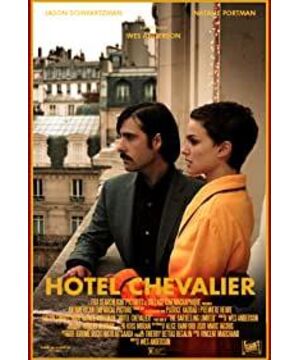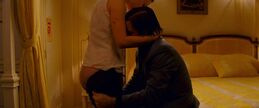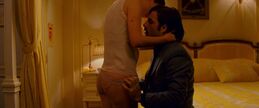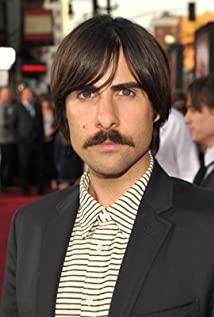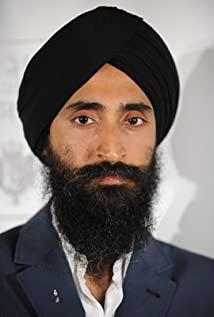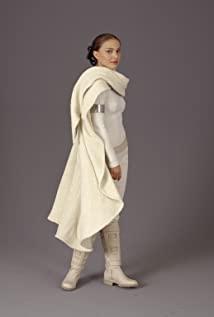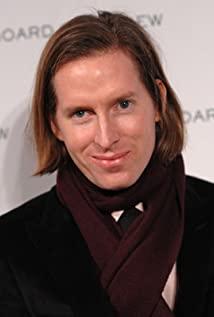Author: Nicole Richter
Wes Anderson's feature-length film shooting has been well received to a large extent. Critics generally believe that, at least, Anderson is a modern director with a distinct director style. Critical research on Anderson’s work has a wide range, including Mark Browning’s 2011 book titled "Wes Anderson: Why His Movies Are Important", and Tod Lippy’s "Wes Anderson" or Devin Olgron’s directorial research, as well as academic research on more specific topics in Anderson’s film productions such as Cynthia Felando’s work on women and aging, James Mack James MacDowell's article on tone and eccentric sensibility, or Joshua Gooch's discussion of patriarchy. Although these works have important content for readers, what is missing in the academic analysis of Anderson is the analysis of his short films.
Criticism of Anderson's work is largely biased towards his feature film production. At first glance, this seems appropriate, but even a rough numerical calculation of Anderson's films shows a blind spot in Anderson's academic research. So far, Anderson has directed seven feature films and three (arguably four) short films. This kind of academic problem is not the only one in Anderson's work, but it reflects the critical bias against short films. Richard Ruskin argued in his seminal book "The Art of Short Story Films" that short story films "have received little attention from teaching and research in the university world. In many film schools today, students are darkened Encourage them to think about them. It's as if they are miniature feature films, rather than works that belong to an art form." In his analysis of the "reductive art" of the short story form, Matthias Bruch agreed with Ruskin. He explained that despite the popularity of short films, "film research shows a lack of interest in short film formats. ", and this form is often marginalized, because people think that short films are "just an exercise for beginners. As a "business card", it may help promote the "realization" of the film, that is, the production of feature films.
Consistent with critics’ continued lack of attention to the genre of short films, Anderson’s short films-"Bottled Rocket", "Knight Hotel", "Cousin's Camp Screening" and "Month" with Jason Schwarzman Animated Short Film of Sheng Kingdom-There are few articles about them. Anderson's continued involvement in the form of the short film shows his alternative view of the form. He chooses to release feature films at the same time as related short films, which sets him apart from traditional film production methods. The analysis of Anderson's short films expands our understanding of his worldview, because his short films are different from his story works in narrative and rhythm.
According to Ruskin's criteria, I think the "Knights Inn" is a great movie in the history of the Pantheon , and Jean Lurgi "Gare du Nord", Jean-Luc Godard's "Montparnasse and Levallois Loire, Tom Tikway's "Faubourg Saint Denis" and Jim Jamush's "Coffee and Cigarette" are listed in the same list. "Knight Hotel" is unique by virtue of its own advantages, and its success lies in its function as the prologue of "Crossing Darjeeling". When applying Ruskin’s conceptual short film model to Anderson’s short films, I tried to explain the difference between Anderson’s storytelling in the short film and the presentation of his novels. The format of the short film can make the narrative of the story different. Anderson's Chevalier Hotel breaks new ground in narrative, and "Bottled Rocket" as a short story has only achieved partial success. The two short films released with "Moonrise Kingdom" are consistent with Anderson's feature film production method. "In Anderson's work, the concepts of "story" and "storytelling" are consciously proposed." However, it is in "The Cavalier Hotel" that we know more about Anderson as a filmmaker, because the emotional core of his art is brought into full play.
Although most scholars on Anderson's work do not discuss his short films at all, there are some critics who at least affirm his short films. Joseph Aisenberg (Joseph Aisenberg) evaluated Anderson's entire career, only two mentions of "Knight Hotel", and no mention of "Bottle Rocket." Eisenberg called "The Cavalier Hotel" a "rehearsal of the short film of "Crossing Darjeeling", and then he mentioned in the article Natalie Portman's disgust of short stature. Such a brief mention of "The Cavalier Hotel" can hardly be called a movie review. In Eisenberg's research, the film exists, but in his assessment of the director, it does not deserve serious analysis. Mark Browning wrote several pages in his book "Wes Anderson: Why His Movies Are Important" to analyze Anderson's short film "Bottled Rockets." Browning's main argument for 16mm short films revolves around the comparison between short films and short film-based feature films. What Browning did was to explain what was missing in the short film, and the short film became part of that function. Of course, Browning's criticism is inevitable because the short film is a short film and not a feature film. However, Browning did observe: "Although it is much shorter than the feature film, there is a more tense dynamic between the three main characters."
Browning's analysis of "The Cavalier Hotel" is slightly more detailed than his review of "Rocket at the Bottom of a Bottle," but it strengthens the marginalization of the short film. Browning called his "Knight Hotel" an "appetizer, a little earlier than the main function", "it feels like a very luxurious DVD add-on or trailer, suitable for longer movies." Browning called this short film "dispensable" and therefore questioned whether it "seems to be self-indulgent." It would be more useful to treat the film as an independent text related to "Crossing Darjeeling" but independent of its function. Browning took this short story as a banter for the feature film, implying that feature films are the most important and short films are unnecessary, because "Crossing Darjeeling" can be viewed from his own point of view. This kind of self-indulgence ignores this point-Anderson has released two movies that should be valued at the same level (length should not determine quality), and audiences can watch both movies for the price of one.
Bottled rocket
The premiere of "Bottled Rocket" at Sundance was only 13 minutes, which impressed producer James Brooks. He commented:
When I saw this 13-minute video for the first time, I was dazzled by its language and rhythm. It was obvious that Wes and Owen were real voices. It is always a miracle to have a real voice, something almost religious. When you have an ant, it not only means that you see things from a slightly different perspective than the billions of other ants on the mountain, but you must also have the same rare qualities as integrity and humility.
The power of this film is that it does establish Anderson's unique voice in film creation through witty screenwriters and strange characterization, and introduces the irony tone and bizarre emotions of Anderson's films to the audience. The short film makes full use of characters and objects and decorations, the most obvious being the close-ups carefully arranged on a dressing table in a room, which are close-ups of various important objects in Digenan’s escape plan.
Although this film contains many themes and styles involved in Anderson's feature film production, it does not take advantage of the short film format. Rather, it functions like a screen test of a synchronized movie that Anderson continues to make. The short film is unbalanced in several ways, the most notable is that the role is concentrated and interacts with the role. Since the film shows us both Digenan and Anthony at the same time, there is no role focus in the short film, but an emphasis on role interaction. For example, the empathic attachment to the characters found in "The Cavalier Hotel" does not exist. This feature film is more influential because it features Digenan as the main character. At dinner, the dialogue between Digenan, Anthony and Bob is reminiscent of Jim Jamush’s "Coffee and Cigarette." "Coffee and Cigarette" succeeded in becoming an excellent short film because it was reduced to a dialogue between Roberto Bernini and Stephen Wright. In the short film format, there is less time to develop complexity, and this lack of development makes "Bottle Rocket" feel more like a shortened version of the feature film than the short film itself. Character development is limited, because most of the content of the short film is focused on robbery, so that no single force can break the complexity of the narrative. Anderson thought of feature films when he was making short films, and the script was a feature film before making the short film. Anderson explained: "The short film should only be part of the "feature film". Early in his career, Anderson regarded film production as the primary and short films as secondary. When he started making "The Cavalier Hotel", he overcame this problematic way of thinking and used the inherent advantages of the short film format to explore the emotional complexity of love.
The narrative structure of "The Cavalier Hotel"
Some critics expressed their disappointment with "Crossing Darjeeling." Eisenberg believes that "Crossing Darjeeling" "always drifting abstractly, I think this is almost a feature of all Anderson films, but there is no enthusiasm here." Browning claimed that Anderson was trying to make a film about India. The attempt "can only be regarded as a failure". I agree that "Crossing Darjeeling" is one of the weaker films directed by Anderson (but still an excellent film in his own evaluation), but "The Cavalier Hotel" is a revelation. This is a better film than "Crossing Darjeeling" and an ideal opportunity to discuss the functional advantages of this short film. This also explains why Anderson still produces short films despite being a successful director. "Knight Hotel" is often described as the opening chapter of "Crossing Darjeeling", although it is true, but more. To understand it only as a prologue, position it as a prelude to the "true story" told in this feature. Anderson himself financed the film and initially planned to make it an independent work, but it was difficult for him to figure out how to distribute the film to audiences. In an interview with The Boston Phoenix, Anderson explained: "When everything is done, I don’t want to incorporate the short film into the film. But I can’t decide how I want it to develop. I want to play the short film before the film, but not always. .Sometimes I prefer to watch movies without short films. It confuses me. So in the end I decided that I want to show this movie in the United States in a short time, but if people want to watch it first, I hope people can use it. "The difficulty that Anderson encountered when arranging the short film speech was that the short film was structurally excluded from the distribution channel. In essence, "Knight Hotel" and "Crossing Darjeeling" are two different movies, and each movie deserves its own audience. Anderson decided to release them separately, emphasizing the idea that "Knight Hotel" itself is a narrative world.
The advantage of "Knight Hotel" as a short film lies in its narrative structure. The most commonly used parameters are character focus and character interaction, character and object and decoration, and image and sound. The characters in "The Cavalier Hotel" are focused very quickly. The opening of the hotel is Jason Schwarzman trying to order French grilled cheese from the front desk of the hotel. He is alone, and obviously he is the protagonist of the short film. The intensity of the film diminished at the beginning, because the first minute of the film showed Schwarzman alone in his hotel room, but the character interaction in the short film kept us interested. When Natalie Portman’s character called her announcing her accidental visit to the hotel room, the narrative direction of the short film began, and with the arrival of Portman, the intensity of the short film gradually increased. Brannon M. Hancock believes that the core quality of Anderson's character narrative development lies in the relationship between self and others. He claimed that Anderson’s treatment of personality depends on “personal recognition, that is, the real existence or personality can only be found in communion, which means that by participating in a specific personality community, a radical mutual relationship with others is formed. Relationship." Hancock’s analysis helps explain why Portman’s character traces to Schwarzman in order to reconnect, even though she knows it won’t work.
Through Schwarzman's deep understanding of her, Portman is considered an ego, and he knows her in a way that no one else knows (for example, he knows to hand her a toothpick at a certain moment). They become complete selves through mutual recognition of each other, so "existence is actually becoming because it is a participatory process, discovering the self in the other, moving from an isolated personality to a personality" (Hancock). In the hotel room, this unique moment became the key to the encounter; they all moved from alienated personalities to communication with each other. In this encounter, they become fully present in the present, and this encounter does not need to lead to more results. In fact, the audience does not know the whole story. This movie promotes this particular story to a universal story. This film is about human relationships in general, about how everyone can become themselves more fully when faced with another existence who recognizes their true identity. The interaction between Portman and Schwarzman in the film is the main force of narrative.
Anderson's films are known for their focus on scene structure, but in short films, this Anderson trademark becomes more necessary.The interaction between characters, objects and decorations in "The Knights Hotel" can quickly convey a large amount of information, thereby providing in-depth information for each character in a limited time. A lot of time in the movie is spent placing and repositioning objects in the hotel space: firstly, Schwarzman prepares for Portman's arrival, and secondly, Portman discovers Schwarzman's space. Although verbal communication rarely occurs, the interaction with the object symbolizes the interaction of the characters in the film. After Schwarzman received the call, he spent a full ten minutes of filming (mainly because the short film was only 13 minutes), washing clothes in his hotel room, pouring the bath, putting in the bubble bath, changing the lighting, and turning off the TV. , Take the figurine out of storage and put it on the table, set the iPod to the perfect song, and then change to a suit. Portman knocked on the door, instead of answering the door immediately, he turned on the iPod, setting the atmosphere for Portman to enter the space. When he opened the door, she was on her phone, and the object was mediating their first interaction. She just said: "What music is this?" She continued to hand him flowers while hugging. When she arrived, she chewed with a toothpick, and then wandered in this space: first she dines on a small altar with statues and pictures, then a second candle and butterfly mount, and at the same time a miniature music box is played, and then his paintings desk. She went into the bedroom, opened the suitcase, and put things in it. Then, she went to the bathroom, grabbed his toothbrush, and brushed her teeth. This series of interactions with objects in space occupies one minute of the film and creates an ambiguous and dense atmosphere. The silence between lovers is full of space decoration. After all, as Stefano Baschiera said, "Wes Anderson films are films of objects... In his films, objects are not merely decorative elements; they contribute to the development of the narrative. It’s important and therefore important to the meaning of the movie, so much so that the Wes Anderson Cinema overcomes the separation between subject and object." . He often uses the objects in the house to develop the narrative (for example, in the Royal Tianlunbao Museum), but the important thing in this location is not the house, but the hotel room, a short space, which makes the objects more in a way Significant. Turn it into a home. Despite their symbolic meaning, these objects themselves have no specific meaning. All of this has led to a chain of meaning that has never been fully resolved. The last minute of the film revolves around two characters interacting in the space: Schwarzman's slow motion action puts Portman on his robe, because the two people can see the view of Paris when they walk out of the balcony. Schwarzman handed her a toothpick, which strengthened their special understanding of each other. Toothpicks represent a common sense of mutual understanding and provide a solution for the film-it's just that he knows her, and she knows that he knows her too. No other solutions are provided.
The third element that "Knight Hotel" is particularly good at is image versus sound. The images and sounds in the movie interact in a beautiful way, especially through the use of music. The music in the short film metaphors actions and adds meaning and expressiveness to the characters' private thoughts. By using Peter Sarstedt's 1969 song "Where Do You Go To (MyLovely)? ", the voice promotes character development by expressing the "meta" concept of the work. This song reinforces the importance of objects in Anderson's work with lyrics such as "Diamonds and pearls in your hair" and "Your clothes are made by Balmain". The lyrics of the song are about clothing, collectibles and settings. Music recognizes the importance of details-what people wear and what they collect are not superficial. In Anderson's view, they provide personal meaning in people's lives and help define the environment in which we exist. Anderson’s work as a whole emphasizes the importance of the environment in people’s lives, and this song reviews the scenes of "The Cavalier Hotel" and Anderson’s wider approach to filming movies.
Cavalier Hotel and Popular Culture
The Cavalier Hotel is closely related to the production of French New Wave short films, especially the French film "Six Directors Watching Paris". "The Six Directors Seeing Paris" features episodes from different locations in Paris, from six new wave directors, including Eric Rohmer, Claude Chabrol and Jean Douchet. , But the two fragments most similar to "The Cavalier Hotel" are Jean Rouch's "Paris Gare du Nord" and the fragment of Jean Luc Godard. The central theme of "Le Gare du Nord" is the communication or failure of communication between married couples. Women long for an adventurous life, while men are satisfied with mediocrity. The two of them argued about their views on ideal life. After quarreling and leaving the apartment, the woman met a man who embodied all her desires to be with her partner, and after refusing to invite him to join the adventure, the man jumped to death. "The Cavalier Hotel" seems to begin where "Le Gare du Nord" left-what happens when a woman returns to a man who refuses because of dullness?
It is slowly revealed in "Knight Hotel" that the role of Natalie Portman has been removed from the role of Jason Schwarzman, which is also implied through the interaction of the two that Portman loves Adventurous and very good at commanding; Schwarzman is indifferent and passive. For her, Schwarzman is not bold enough. Obviously, Portman has slept with other men since the breakup, and it is also clear that Schwarzman has not slept with other women. And Portman's return signifies that she can't find what she wants in her relationship with other men. She found in Schwarzman what she wanted to return, but he was not enough to keep her with him forever. The beauty of this film lies in this paradox: the desire for part of the other but not all of it. The short space (hotel room) and the short moment (she will leave tomorrow) constitute a short space of freedom and love that does not require further commitment. The structure of the short film is particularly suitable for exploring this paradox, because it allows the narrative to develop without explanation or end. We start in the middle of the story and end in the middle of the story. The middle part becomes the main part, which is rarely seen in feature film narratives, and the ending (or the third act) is usually given priority. Bruch explained: “Longer movies, especially those that follow the rules of classic stories, usually try to make sure that all the questions raised are finally answered adequately. Short movies. More often, they leave the question unanswered, unresolved. . The best example. To achieve an interesting ambiguity, surprisingly they have a limited duration." The theme of this movie, like the short film in "Six Directors Watching Paris", is in a specific location in Paris. As long as they stay at the Cavalier Hotel, Portman and Schwarzman can delay their relationship. The problem of enjoying each other without preconditions or future commitments.
The way Anderson writes the dialogue slowly allows the dialogue to unfold in a naturalistic way, which is very reminiscent of Jean Luc Godard's way of photographing intimate conversations between lovers. The extended apartment scenes in "Contempt" (1963) and "Exhausted" (1960) are almost the same as Anderson's skits. Anderson built a complete movie around a scene, a location, a couple, and a dialogue, and approached Godard’s themes in a purified form, such as the incompatibility between men and women, and the incompatible desires of men and women. . Godard's short story "Montparnasse and Levallois" is Godard's attempt to explore these "discourse patterns" in abbreviated form. Godard explained that when you watch a movie, you "can feel that existence is like matter: what matters is not the people, but the atmosphere between them." Anderson's treatment of the two characters in "The Knights Inn" is the same: what matters is not the personality of each character, but the atmosphere between them. The film comes from the space shared by Portman and Schwarzman.
The delay in narrative development exacerbated the atmosphere between them. There is no explanation for how the characters got to where they are or what they are doing there. When discussing Godard’s use of narrative delay, one critic claimed: "His narrative strategy seems to be to do everything possible to avoid the well-known'chasing'." (Carl) The dramatic tension in The Knights Inn is based on Derived in the same way, because Portman and Schwarzman (on a deeper level, Anderson) refused to say their true feelings, and neither of them "cut to the point." Most of the film is denied, ignored, suppressed and suppressed the truth of the matter. Tiny details will appear over time, but the movie never fully tells the truth of the facts. On the contrary, this movie is about the powerless and powerless ways of human beings. Anderson reinforces this notion through the scenes of the film, which is a chain of meaning triggered by objects in unresolvable space (as mentioned above). The lack of a structural relationship with "Crossing Darjeeling" further exacerbated the lack of solutions. They are related in one way. In other words, they have similarities and overlaps. But one does not structurally define or determine the other. In "Crossing Darjeeling", "Knight Hotel" is intertextually quoted, but the quote itself is the meaning-one movie cannot clarify another movie. The same is true for Goddard's "Montparnasse and Levallois"-the short story is the same as the story of Jean Paul Belmondo in "A Woman Is a Woman".
"The Cavalier Hotel" should also be analyzed together with "Paris, I Love You", which is an anthology of short films from 2006, each of which is held in a different area of Paris. "Paris, I Love You" was created in Paris in the spirit of the Six Nations. The main difference is that the directors participating in the anthology come from different national backgrounds, not just French. Although there are several excellent books in the anthology, "FaubourgSaint-Denis" has aroused great interest here, because Natalie Portman starred in it, and only one year later in "The Cavalier Hotel." Directed by Tom Tykway, this film tells a moment of misunderstanding between a couple: Natalie Portman plays an American actress in Paris, and Melchior Bethron plays her blind boyfriend. Most of the film's content is told through montages, showing the repeated actions taken by each person in the relationship, which ultimately leads to the breakdown of passion. Like "The Cavalier Hotel," women desire more, and men desire the same. It is conceivable that Anderson would make "Knight Hotel" in this way, because one of the four main stylistic features of Anderson's movies mentioned earlier is the use of montage. When "Knight Hotel" refused to use montage, it actually kept more possibilities for communication between husband and wife, because it failed to explain how or why the breakup between husband and wife happened.
"FaubourgSaint-Denis" is also related to the film through the star role of Natalie Portman (Natalie Portman), bringing her previous short film work into her performance in "The Cavalier Hotel", but Anderson will Tick The theme of Wei's collaboration has been pushed in a more subtle and mysterious direction. Portman's lover in "FaubourgSaint-Denis" could not see her literally, nor could he understand her true identity, until the insights gathered from Portman's wrong performance allowed him to see her completely metaphysically To her. "I saw you," Thomas said at the end of the movie. "The Cavalier Hotel" is less optimistic and hopeful-the couple did not gain any new knowledge from their impromptu meeting-but Anderson found it meaningful enough for them to meet and share time. Impermanence and openness are here. This ambiguity plays a very good role in the short film format. "Compared with epic grandeur, completely fictional immersion and intricate plot development, it is ambiguous with allusions, paradoxes, and ambiguities. , Simple and fun are more about ".
Matthias Brütsch (Matthias Brütsch) put forward the idea that shortness is an opportunity, not an obstacle. He asked a question: "Despite the time limit, what can't happen?" Wes Anderson answered this question through his "Knight Hotel". Anderson is released in "The Cavalier Hotel" and can focus on an idea to reduce the experience of romantic relationships to a minimum moment, thereby simplifying his idea to almost unnecessary. The lack of a sense of closure at the end of the movie makes the couple's future uncertain and even stronger.
Anderson's experimentation with the short film format distinguished him from his contemporaries, allowing him to explore different aspects of himself, rather than being limited to one structure. Anderson's short film works have a dialogue with the rich history of French New Wave short film production, and incorporate elements of artistic cinema, which are produced outside of the Hollywood-dominated film model. He has been committed to making short films, an art form marginalized by commercial production, which reflects the desire of his unusual film characters. He refused to accept the traditional film production structure and created art for Weiss, thus breaking the tradition.
View more about Hotel Chevalier reviews


